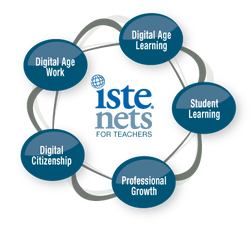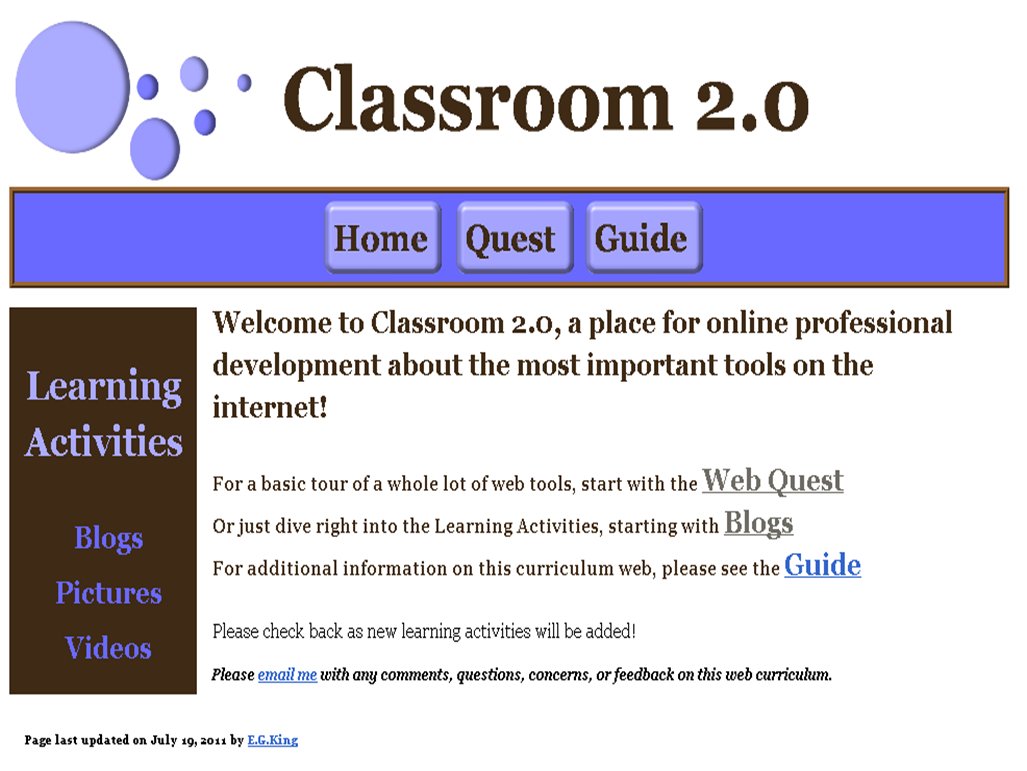3. Model Digital Age Work and Learning

Teachers exhibit knowledge, skills, and work processes representative of an innovative professional in a global and digital society.
a. Demonstrate fluency in technology systems and the transfer of current knowledge to new technologies
and situations
b. Collaborate with students, peers, parents, and community members using digital tools and resources to support student success and innovation
c. Communicate relevant information and ideas effectively to students, parents, and peers using a variety of digital age media and formats
d. Model and facilitate effective use of current and emerging digital tools to locate, analyze, evaluate, and use information resources to support research and learning
a. Demonstrate fluency in technology systems and the transfer of current knowledge to new technologies
and situations
b. Collaborate with students, peers, parents, and community members using digital tools and resources to support student success and innovation
c. Communicate relevant information and ideas effectively to students, parents, and peers using a variety of digital age media and formats
d. Model and facilitate effective use of current and emerging digital tools to locate, analyze, evaluate, and use information resources to support research and learning
Artifact 1: Classroom 2.0 Web Curriculum
|
I created this web curriculum for teachers unfamiliar with the vast variety of web 2.0 tools available. Teachers can complete a webquest to review 2.0 tools, or dive right into the learning activities. Each of the learning activities (blogging, pictures, and video) ask the teachers to investigate and learn how to use the tools, find information that is relevant to their needs, and reflect on what they found. While I only created three learning activities, this web curriculum would be easy to expand to include topics like social bookmarking, wikis, and/or micro-blogging (Twitter).
|
Artifact 2: Mimio in the Classroom Instructional Plan
|
|
This instructional plan also deals with professional development, namely the introduction of Mimio interactive white boards into the classroom. At the time I created this lesson my school was engaging in a large scale installation of Mimios into the classroom, yet the teachers had received no training on how to use the devices and software. For this plan I completed an instructional and diversity analysis, created materials related to lessons based on behavioural objectives, and devised implementation and evaluation plans. Due to changes in the University of West Georgia M.Ed program and my maternity leave, I did not have to submit any evaluation data, although the unit was taught to the teachers. Some of the materials I created for this project are included on my PD Materials page.
|
Reflections
Since my passion is technology professional development, not only must I model digital age work and learning, I need to be able to help and instruct other teachers on how to fulfill this standard. To this end, both of my professional development artifacts would assist teachers in a variety of ways. Looking at the Mimio instructional plan, to create and teach it I first had to become fluent in both the hardware and software. Learning the software was not difficult as it is similar to PowerPoint, and I transferred my PowerPoint knowledge to it. During the time I created it I collaborated with several different teachers to gain their input as to what information was most useful and what tactics would increase the teachers’ (my students) success. For my web curriculum on web 2.0 tools, I am “model[ing] and facilitat[ing] effective use of current and emerging digital tools to locate, analyze, evaluate, and use information resources to support research and learning.” By completing the web quest and curriculum activities, teachers are exposed to a variety of digital tools, and for each of the three main areas (blogging, videos, and pictures) the teachers are asked to locate resources that can be used to support their students’ learning.

